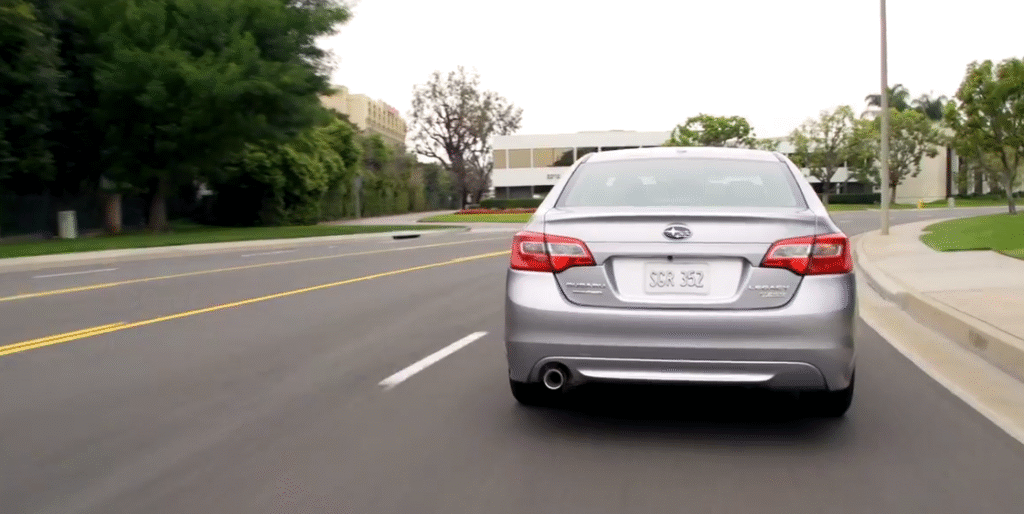Subaru’s EyeSight settlement has garnered a lot of attention recently from owners who have long complained about the peculiarities of the system. Subaru’s cutting-edge driver assistance system, EyeSight, which it has proudly marketed as a safety feature, came under legal scrutiny following complaints of unexpected braking, missed hazard detection, and inconsistent lane guidance. The settlement offers drivers a noticeably better support package, even though Subaru still disputes any flaw.
Affected models’ New Vehicle Limited Warranty will be extended for up to four years or 48,000 miles from the vehicle’s original in-service date to cover 75% of the cost of repairs to essential EyeSight components, such as pre-collision braking, rear automatic braking, and lane-keeping assist. An extra four months are still available to owners whose warranties ended prior to July 29, 2025. This is especially advantageous for cars that are just outside of coverage.
A significant additional element is reimbursement. 75% of the cost of any driver’s previous out-of-pocket expenses for a covered EyeSight repair during their warranty period may be reimbursed. This includes, if the repair paperwork is complete, replacing the rear sonar sensors or the EyeSight camera assembly. The settlement permits one qualifying reimbursement per vehicle, which can amount to hundreds or even thousands of dollars in many situations.
Subaru EyeSight Settlement – Key Information
| Detail | Information |
|---|---|
| Case Title | Sampson, et al. v. Subaru of America Inc., Case No. 1:21-cv-10284-ESK-SAK |
| Settlement Amount | Undisclosed |
| Eligible Vehicles | Certain 2013–2024 Subaru models with EyeSight driver assistance |
| Benefits | Warranty extension (75% cost coverage) and reimbursement for one qualifying repair |
| Claim Deadline | September 27, 2025 |
| Exclusion/Objection Deadline | August 28, 2025 |
| Final Hearing | November 3, 2025 |
| Settlement Website | https://www.eyesightsettlement.com |
| Claims Administrator | JND Legal Administration |
| Class Counsel | Berger Montague P.C., Capstone Law APC |

Strategically speaking, Subaru’s choice is incredibly successful in minimizing possible harm to its reputation. EyeSight has been a key component of Subaru’s safety messaging for more than ten years, frequently used in conjunction with dependable, adventurous imagery. A protracted legal battle ran the risk of undermining that impression, but this settlement repositions the brand as customer-focused and responsive.
Berger Montague P.C. and Capstone Law APC, the legal teams, designed the benefits to benefit both present and past owners. The extended warranty is noteworthy because it can be passed on to new owners, increasing the vehicle’s resale value. Even though it is a minor detail in the legal text, it is very effective in preserving brand loyalty in the used car market, where perception frequently lags behind initial sales campaigns.
Responses in car forums have been mixed, ranging from relief to doubt. The system pulling the vehicle toward the wrong lane marking or abrupt braking at highway speeds without any obvious obstacles are two instances that some owners describe as being especially terrifying. Others raise concerns about whether drivers depend too much on automation, arguing that awareness and manual control are still crucial. A larger industry discussion regarding striking a balance between driver engagement and assistance technology is highlighted by these divergent viewpoints.
A growing number of agreements in the automotive industry that challenge advanced safety technology include the EyeSight settlement. Consumer expectations for such systems are very high, as demonstrated by the Tesla Autopilot lawsuits and the GM Super Cruise complaints, and any perceived inconsistency can swiftly turn into legal action. Subaru’s proactive response to these allegations shows that it understands how brittle automation is and that it is worth the expense to preserve it.
The deadline is drawing near. By August 28, 2025, class members who want to object or exclude themselves must take action. The final hearing is scheduled for November 3, 2025, and claims for reimbursement must be submitted by September 27, 2025. After approval, warranty renewals and reimbursements ought to happen right away. This timeline is substantially quicker than some well-known settlements where payments have been postponed for years.
In terms of administrative costs, this agreement is surprisingly inexpensive for consumers, and it provides simple online or postal claim submission. Repair invoices and payment records are examples of required proof, which guarantees authenticity and lowers participation barriers.
The case’s wider ramifications might extend beyond Subaru. For rivals like Toyota and Honda, whose driver-assist systems also use arrays of cameras and sensors, this could be a warning precedent. Should comparable grievances surface, the Subaru model, which combines warranty extensions with partial reimbursements, may serve as a model for handling them without acknowledging fault.
In many respects, the EyeSight settlement serves as a reminder of how class actions can serve as an informal regulatory mechanism. Such complaints may not be addressed by regulators for years, but litigation compels quicker resolutions. In addition to being monetary, the settlement represents a commitment to upholding safety-critical technology standards and a recognition of the owners’ concerns.

